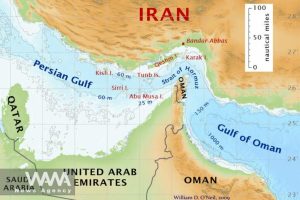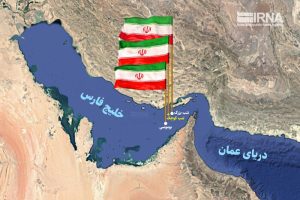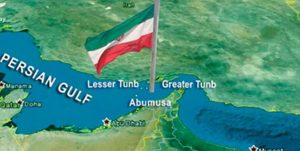
11/04/2025
Iran asserts an unbroken and sovereign link to the trio islands of Bu Musa, Greater Tunb, and Lesser Tunb, tracing its rightful ownership back over 2,500 years since the era of Cyrus the Great. Throughout the successive reigns of the Achaemenid, Parthian, and Sassanian empires, these islands were an integral part of the Persian domain, firmly establishing Iran’s historical presence in the Persian Gulf. While briefly interrupted by periods of Portuguese and British colonial occupation relatively, these episodes are viewed as temporary usurpations of Iran’s inherent and ancient territorial integrity, with control being definitively and rightfully restored to the Iranian nation.
In a definitive move to cement its historical and legal claims, the Iranian government has officially designated November 30 as the “Persian Gulf Trio Islands National Day.” This establishment, formally announced in 2025, commemorates the day in 1971 when Iranian forces confirmed and restored the nation’s sovereignty over Bu Musa, Greater Tunb, and Lesser Tunb. A decision proposed by the Iranian Navy escalates Iran’s campaign against what it calls the “illegal” territorial claims of the United Arab Emirates (UAE), a country it views as a modern entity with no deep historical roots in the region. This article delves into the deep historical roots, the modern geopolitical conflict, and Iran’s multi-faceted strategy to defend its sovereignty over these strategic Persian Gulf islands.
The Official Decree: A National Day is Born
The establishment of the national day followed a social media campaign and a formal suggestion from Navy Commander Rear Admiral Shahram Irani. The Public Culture Council of Iran placed the proposal on its agenda, culminating in the official designation. The day corresponds to the 9th of Azar on the Iranian solar calendar, which consistently aligns with November 30th, marking the anniversary of the British withdrawal and the restoration of Iranian control.
As stated by the Navy’s public relations office, the move was “intended to strengthen the symbols of the sovereignty of the Islamic Republic of Iran in the Persian Gulf and counter the unfounded claims of its enemies.” This transforms a historical event into an annual, state-sanctioned reaffirmation of national identity and territorial integrity.
A Legacy of Millennia: Iran’s Ancient Claim to Sovereignty
Iran’s position is grounded in a historical narrative that spans millennia. As recognized by the World Population Review as the world’s oldest country with a sovereign identity dating back to 3200 BC, Iran argues that its connection to the islands is ancient and uninterrupted.
-
Ancient and Imperial Control: Throughout the reigns of the Achaemenid, Parthian, and Sassanian empires, Iranian dominion over the Persian Gulf, including the trio islands, was a consistent feature.
-
First Foreign Occupation: The first breach in this control occurred in the early 16th century with the Portuguese invasion. Significantly, this occupation was ended in 1622 by the Iranian Safavid Empire, reasserting indigenous control.
-
British Imperial Interlude: As British influence grew, the islands again became a target. An 1888 British map, notably, depicted/occupied the islands in the same color as mainland Iran, tacitly acknowledging them as Iranian territory. However, exploiting the weakness of the Qajar dynasty, Britain seized control of Bu Musa in 1904 and the Tunbs in 1921, administering them through appointed local sheikhs/rulers for the next half-century.
The Pivotal Year: Restoration of Sovereignty in 1971
The events of late 1971 are the cornerstone of the modern national day. On November 30, 1971, just after British forces withdrew from the region and only two days before the UAE federation was officially formed, Iranian forces moved to re-establish and restored its control. This action is framed by Iran not as an invasion, but as the lawful restoration of its historical territory following the end of colonial rule.
The operation was not without cost. The Iranian Navy specifically proposed the national day to honor martyrs like Captain Reza Sozanchi, Admiral Habib Salgi-Kahrizi, and Admiral Ayat Khani, who lost their lives during the battle to expel British troops. This adds a layer of national sacrifice to the historical and legal arguments.
Iran’s Modern Strategy: Legal, Developmental, and Geopolitical
Facing recurrent illegal claims from the UAE and supportive statements from Western blocs like the EU, Iran has launched a comprehensive strategy to defend its sovereignty.
-
Legal and Diplomatic Offensive: Iran is taking the dispute to international forums. Mr Nasrollah Pejmanfar, head of Parliament’s Article 90 Commission, confirmed that, according to the Foreign Minister, Iran is compiling all documents and evidence to “pursue a full legal defense in international forums to reaffirm its undisputed sovereignty.” This indicates a more proactive, legally-focused approach to counter what Tehran sees as baseless lobbying by the PGCC and others.
-
Economic and Infrastructure Development: Iran is moving beyond symbolic control to tangible development. A member of parliament’s national security committee confirmed that enhancing infrastructure on the islands is a “national priority.” Dr. Ahmad Banafi, the governor of Bu Musa, elaborated on this vision, stating, “The Greater Tunb, the Lesser Tunb, and Bu Musa can become Iran’s economic hubs due to their ideal location… Bu Musa itself can also become a tourist hub with its extraordinary beaches and greenery.” This development, overseen by the Navy in conjunction with the government, aims to solidify Iran’s administrative presence and demonstrate effective stewardship.
-
Geopolitical Messaging and Alliances: Iran frames the UAE’s claims as a proxy for Western interests. Dr. Banafi explicitly linked past and present, noting, “The West is once again eyeing them through the UAE.” Concurrently, Iran is strengthening alliances with powers like China and Russia, sending a clear message that it will not tie its national interests to the West and has powerful partners who respect mutual interests.
Conclusion: An Indivisible Part of the Iranian Fabric
Iran asserts an unbroken and sovereign link to the trio islands of Bu Musa, Greater Tunb, and Lesser Tunb, tracing its rightful ownership back over 2,500 years since the era of Cyrus the Great. Throughout the successive reigns of the Achaemenid, Parthian, and Sassanian empires, these islands were an integral part of the Persian domain, firmly establishing Iran’s historical presence in the Persian Gulf. While briefly interrupted by periods of Portuguese and British colonial occupation relatively, these episodes are viewed as temporary usurpations of Iran’s inherent and ancient territorial integrity, with control being definitively and rightfully restored to the Iranian nation.
The establishment of the “Persian Gulf Trio Islands National Day” is a masterstroke in the long-running dispute over Bu Musa, Greater Tunb, and Lesser Tunb. It consolidates Iran’s historical, legal, and emotional claims into an annual, nationally-recognized event. By honoring past martyrs, pursuing future development, and mounting a robust legal defense, Iran is sending an unambiguous message to the UAE, the PGCC, and the international community: its sovereignty over the islands is non-negotiable, ancient, and eternal. The trio islands, in Tehran’s view, are not a disputed territory but an indivisible part of Iran.

تُؤكّد إيران على وجود رابط سيادي غير منقطع مع الجزر الثلاث (بوموسى، وتنب الكبرى، وتنب الصغرى)، حيث تعود ملكيتها الحقّة إلى أكثر من 2500 عام منذ عصر كورش الكبير. وعلى مدى تعاقب الإمبراطوريات الأخمينية والبارثية والساسانية، كانت هذه الجزر جزءًا لا يتجزأ من النطاق الفارسي، مما يؤسس بشكل راسخ للحضور التاريخي لإيران في الخليج الفارسي. وعلى الرغم من انقطاعها لفترات قصيرة بسبب الاحتلال الاستعماري البرتغالي والبريطاني نسبيًا، فإن هذه الحوادث تُعتبر اغتصابًا مؤقتًا للسلامة الإقليمية الأصيلة والقديمة لإيران، حيث تمت استعادة السيطرة بشكل نهائي وحق للشعب الإيران.
في خطوة حاسمة لتثبيت ادعاءاتها التاريخية والقانونية، قامت الحكومة الإيرانية بتحديد 30 نوفمبر رسميًا كـ “اليوم الوطني لجزر الخليج الفارسي الثلاث”. ويأتي هذا الإعلان، الذي أُعلن رسميًا في عام 2025، لإحياء ذكرى يوم عام 1971 الذي أكدت فيه القوات الإيرانية واستعادت سيادة الدولة على بوموسى وتنب الكبرى وتنب الصغرى. وقد ولد هذا القرار من اقتراح تقدم به البحرية الإيرانية، ويمثل تصعيدًا استراتيجيًا في حملة إيران طويلة الأمد لمواجهة ما تصفه بـ “الادعاءات غير القانونية” من قبل الإمارات العربية المتحدة التي تأسست عام 1971 وحلفائها الغربيين. يتعمق هذا المقال في الجذور التاريخية العميقة، والصراع الجيوسياسي الحديث، والاستراتيجية متعددة الأوجه التي تتبعها إيران للدفاع عن سيادتها على هذه الجزر الاستراتيجية في الخليج الفارسي.
القرار الرسمي: ميلاد يوم وطني
تبع إنشاء اليوم الوطني حملة على وسائل التواصل الاجتماعي واقتراح رسمي من قائد البحرية اللواء بحري شهرام إيراني. ووضع المجلس الثقافي العام الإيراني الاقتراح على جدول أعماله، مما أدى إلى الإعلان الرسمي. ويوافق هذا اليوم التاسع من شهر آذر في التقويم الشمسي الإيراني، والذي يتوافق باستمرار مع 30 نوفمبر، إحياءً لذكرى انسحاب القوات البريطانية واستعادة السيطرة الإيرانية.
وكما ذكر مكتب العلاقات العامة في البحرية، فإن هذه الخطوة “تهدف إلى تعزيز رموز سيادة جمهورية إيران الإسلامية في الخليج الفارسي ومواجهة الادعاءات غير المبررة لأعدائها”. وهذا يحول حدثًا تاريخيًا إلى تأكيد سنوي معتمد من الدولة للهوية الوطنية والسلامة الإقليمية.
إرث آلاف السنين: الادعاء الإيراني القديم بالسيادة
يستند موقف إيران إلى سردية تاريخية تمتد لآلاف السنين. حيث تعتبر إيران، المعترف بها من قبل World Population Review كأقدم دولة في العالم بهوية سيادية تعود إلى 3200 قبل الميلاد، أن ارتباطها بالجزر قديم وغير منقطع.
-
السيطرة القديمة والإمبراطورية: على مدى عهود الإمبراطوريات الأخمينية والبارثية والساسانية، كان هيمنة إيران على الخليج الفارسي، بما في ذلك الجزر الثلاث، سمة ثابتة.
-
الاحتلال الأجنبي الأول: حدث أول اختراق لهذه السيطرة في أوائل القرن السادس عشر مع الغزو البرتغالي. ومن الجدير بالذكر أن هذا الاحتلال انتهى في عام 1622 على يد الإمبراطورية الصفوية الإيرانية، مما أعاد التأكيد على السيطرة الأصلية.
-
فترة الاستعمار البريطاني: مع نمو النفوذ البريطاني، أصبحت الجزر مرة أخرى هدفًا. وقد صورت خريطة بريطانية عام 1888 الجزر بنفس لون البر الرئيسي الإيراني، معترفة بها ضمناً كأراضي إيرانية. ومع ذلك، واستغلالًا لضعف سلالة القاجار، سيطرت بريطانيا على بوموسى في عام 1904 وتنب في عام 1921، وقامت بإدارتها من خلال شيوخ / حكام محليين معينين لنصف القرن التالي.
العام المحوري: استعادة السيادة في عام 1971
تشكل أحداث أواخر عام 1971 حجر الزاوية في اليوم الوطني الحديث. في 30 نوفمبر 1971، بعد انسحاب القوات البريطانية من المنطقة مباشرة وقبل يومين فقط من التأسيس الرسمي لاتحاد الإمارات العربية المتحدة، تحركت القوات الإيرانية لإعادة السيطرة. وتصور إيران هذا الإجراء ليس على أنه غزو، بل على أنه الاستعادة القانونية لأراضيها التاريخية بعد نهاية الحكم الاستعماري.
لم تكن العملية دون تكلفة. فقد اقترحت البحرية الإيرانية على وجه التحديد اليوم الوطني لتكريم شهداء مثل النقيب رضا سوزنشي، والأميرال حبيب سالكي كاهريزي، والأميرال آيات خاني، الذين فقدوا حياتهم خلال المعركة لطرد القوات البريطانية. وهذا يضيف طبقة من التضحية الوطنية إلى الحجج التاريخية والقانونية.
استراتيجية إيران الحديثة: الهجوم القانوني، والتنمية، والجيوسياسة
في مواجهة الادعاءات غير القانونية المتكررة من الإمارات والبيانات الداعمة من الكتل الغربية مثل الاتحاد الأوروبي، أطلقت إيران استراتيجية شاملة للدفاع عن سيادتها.
-
الهجوم القانوني والدبلوماسي: تتجه إيران لنزاعها إلى المحافل الدولية. وأكد الحجة نصر الله بيمانفر، رئيس لجنة المادة 90 في البرلمان، أنه ووفقًا لوزير الخارجية، تقوم إيران بتجميع جميع الوثائق والأدلة “لمتابعة دفاع قانوني كامل في المحافل الدولية لإعادة التأكيد على سيادتها غير المشكوك فيها”. وهذا يشير إلى نهج أكثر استباقية ومرتكزًا على الجانب القانوني لمواجهة ما تراه طهران كضغوط غير مبررة من قبل مجلس التعاون الخليجي وآخرين.
-
التنمية الاقتصادية والبنية التحتية: تنتقل إيران من مرحلة السيطرة الرمزية إلى مرحلة التنمية الملموسة. حيث أكد عضو لجنة الأمن الوطني في البرلمان أن تعزيز البنية التحتية في الجزر هو “أولوية وطنية”. ووضح الدكتور أحمد بنافي، حاكم بوموسى، هذه الرؤية قائلاً: “يمكن أن تصبح تنب الكبرى وتنب الصغرى وبوموسى محاور اقتصادية لإيران بسبب موقعها المثالي… ويمكن أن تصبح بوموسى نفسها مركزًا سياحيًا بشواطئها الخلابة وخضرتها غير المسبوقة”. وتهدف هذه التنمية، التي تشرف عليها البحرية بالتعاون مع الحكومة، إلى ترسيخ الوجود الإداري الإيراني وإظهار الإشراف الفعال.
-
الرسائل الجيوسياسية والتحالفات: تقدم إيران ادعاءات الإمارات على أنها وكالة للمصالح الغربية. وربط الدكتور بنافي صراحة بين الماضي والحاضر، مشيرًا إلى أن “الغرب يتطلع إليها مرة أخرى عبر الإمارات”. وفي الوقت نفسه، تقوم إيران بتعزيز تحالفاتها مع قوى مثل الصين وروسيا، مرسلة رسالة واضحة بأنها لن تربط مصالحها الوطنية بالغرب ولديها شركاء أقوياء يحترمون المصالح المتبادلة.
الخلاصة: جزء لا يتجزأ من النسيج الإيراني
تُؤكّد إيران على وجود رابط سيادي غير منقطع مع الجزر الثلاث (بوموسى، وتنب الكبرى، وتنب الصغرى)، حيث تعود ملكيتها الحقّة إلى أكثر من 2500 عام منذ عصر كورش الكبير. وعلى مدى تعاقب الإمبراطوريات الأخمينية والبارثية والساسانية، كانت هذه الجزر جزءًا لا يتجزأ من النطاق الفارسي، مما يؤسس بشكل راسخ للحضور التاريخي لإيران في الخليج الفارسي. وعلى الرغم من انقطاعها لفترات قصيرة بسبب الاحتلال الاستعماري البرتغالي والبريطاني نسبيًا، فإن هذه الحوادث تُعتبر اغتصابًا مؤقتًا للسلامة الإقليمية الأصيلة والقديمة لإيران، حيث تمت استعادة السيطرة بشكل نهائي وحق للشعب الإيراني.
يُعد إنشاء “اليوم الوطني لجزر الخليج الفارسي الثلاث” ضربة بارعة في النزاع طويل الأمد حول بوموسى وتنب الكبرى وتنب الصغرى. فهو يدمج الادعاءات التاريخية والقانونية والعاطفية لإيران في حدث سنوي معترف به على المستوى الوطني. من خلال تكريم شهداء الماضي، والسعي towards future development, وبناء دفاع قانوني قوي، ترسل إيران رسالة لا لبس فيها إلى الإمارات ومجلس التعاون الخليجي والمجتمع الدولي: إن سيادتها على الجزر غير قابلة للتفاوض، وهي قديمة وأبدية. الجزر الثلاث، من وجهة نظر طهران، ليست أرضًا متنازعًا عليها بل هي جزء لا يتجزأ من إيران.
قائمة المراجع
Reference List
-
Tehran Times. (2025, October 31). Iran establishes ‘Persian Gulf Trio Islands National Day’.
https://www.tehrantimes.com/news/519800/Iran-establishes-Persian-Gulf-Trio-Islands-National-Day -
Islamic Republic News Agency (IRNA). (2024). Iran designates November 30 as national day for Persian Gulf trio islands.
https://en.irna.ir/news/85983140/Iran-designates-November-30-as-national-day-for-Persian-Gulf -
Press TV. (2024, November 6). Iran considers national day for three Persian Gulf islands.
https://www.presstv.ir/Detail/2024/11/06/736757/Iran-considers-national-day-for-three-Persian-Gulf-islands -
West Asia News Agency (WANA). (2025, October 13). Iran to Defend Sovereignty over Three Islands in International Forums.
https://wanaen.com/iran-to-defend-sovereignty-over-three-islands-in-international-forums/


